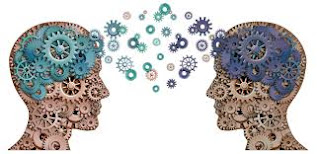KNOWLEDGE MANAGEMENT SKILLS
Basically, different position in KM department need a
different skill such as leadership skill, managing skill and technical skill.
According to Mohanta (2010), she identifies six essential
quality that all knowledge workers need to some extent;
Possessing factual and theoretical knowledge
Finding and accessing information
Ability to apply information
Communication skills
Motivation
Intellectual capabilities.
Possessing factual and theoretical knowledge
Finding and accessing information
Ability to apply information
Communication skills
Motivation
Intellectual capabilities.
KM Directors should have as many of the required skills
below as possible. The five core scope of required skills should include:
1. Knowledge Management Experience
-
Have a clear and deep understanding of KM principles.
-
Understand in how to form a KM strategy.
-
Being exposed with KM best practices.
2. Learning Industry Experience
-
Involve with continuous learning solutions.
-
Understand on how KM and learning associate.
3. Technology Project Management
-
Skilled in technology work management
-
Managing indirectly with shared technology resources.
4. Matrix Management Skills
-
Skill on enabling cross-functional teams.
-
Comfortable in a matrix reporting environment
5. Industry Subject Matter Expertise
- Knowledge of the core business KM is supporting
- Clear and wide range of knowledge of existing
business, process and challenges that may happen.
- Being exposed with organization competition,
stakeholders and market chance.
Knowledge Managers.
According to McKeen & Staples (2002), they conducted a
survey of 41 knowledge managers and from it they created a tentative portrait
of the knowledge manager:
Highly educated
Already a seasoned organizational performer. Chosen for KM based on proven performance.
Seeks new knowledge
Likes "being at the forefront of something new and exciting"
Derives more motivation from a challenge than from formal power
Receives intrinsic rewards from helping others
A risk-taker
Sees KM as a way to "make a mark within the organization".
Highly educated
Already a seasoned organizational performer. Chosen for KM based on proven performance.
Seeks new knowledge
Likes "being at the forefront of something new and exciting"
Derives more motivation from a challenge than from formal power
Receives intrinsic rewards from helping others
A risk-taker
Sees KM as a way to "make a mark within the organization".
A. Frost (2010, Knowledge Management Skills. KMT, An Educational KM Site.
http://www.knowledge-management-tools.net/skills.html


